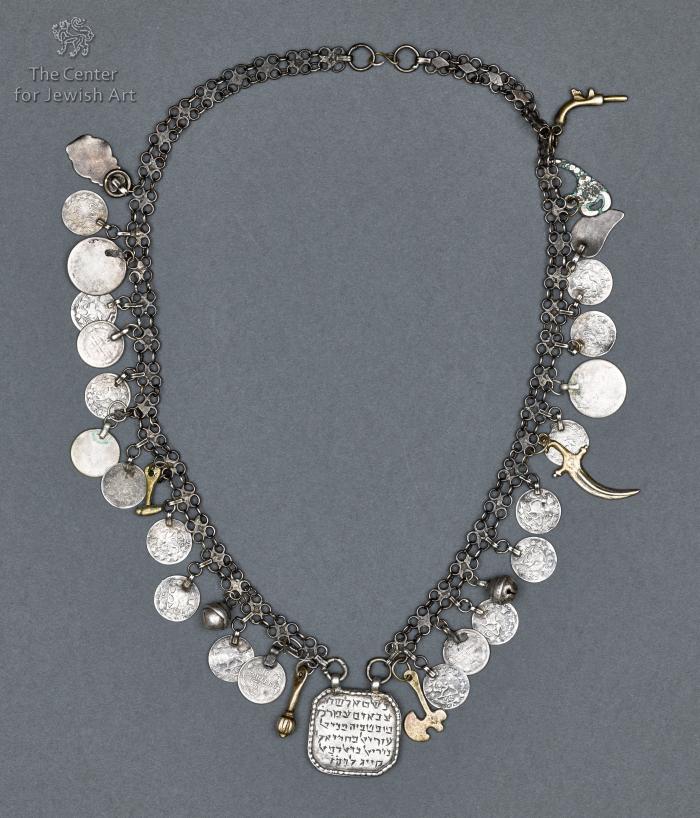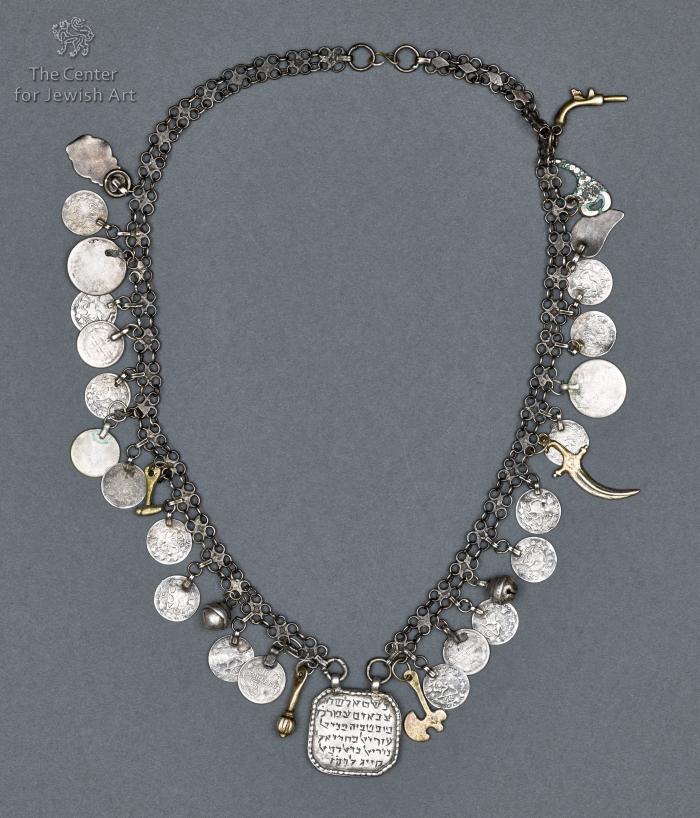Obj. ID: 36599 Amulet, Iraqi Kurdistan, circa 1920

sub-set tree:
The following description was prepared by William Gross:
From earliest times, man has tried to protect himself from misfortune by the use of objects which he considered holy or otherwise (e.g., magically) potent. Amulets and talismans are items generally worn around the neck or wrist, carried in a pocket or purse or hung on a wall. They are meant to protect or aid those who carried or wore them. The Hebrew word for amulet, kame‘a, has the root meaning "to bind". Jewish amulets are usually comprised of texts (either letters or graphic symbols) that are inscribed on some sort of material; some may also contain plant matter or precious stones. The texts of amulets usually include holy names that are believed to have the ability to affect reality, along with incantations summoning angels or other magical powers. For the most part, an amulet has a specific purpose: to ease childbirth, facilitate recovery from illness, improve one’s livelihood, and so on, but in the modern world many are also made for general protection.
From the rsurviving examples, it would seem that the area of Iraqi Kurdistan produced the most amuletic necklaces that we know, featuring various amuletic devices to protect the wearer. This example combines a central square amulet suspended from a chain carrying coins, silver discs and amuletic charms into a most attractive piece of talismanic jewelry. Almost all the charms are weapons of one sort or another to fight the evil spirits, particularly Lilith. So there appear, a pistol, a knife, an axe a club, a hammer and bells to make frightening noises. The round coins and silver discs may represent the eye, which is itself an antidote to the evil eye. The cut cornered square at the bottom contains "names" and angel designations, signifying that it is a general protection amulet against evil spirits.
Inscription: Amuletic "names" and formulas



